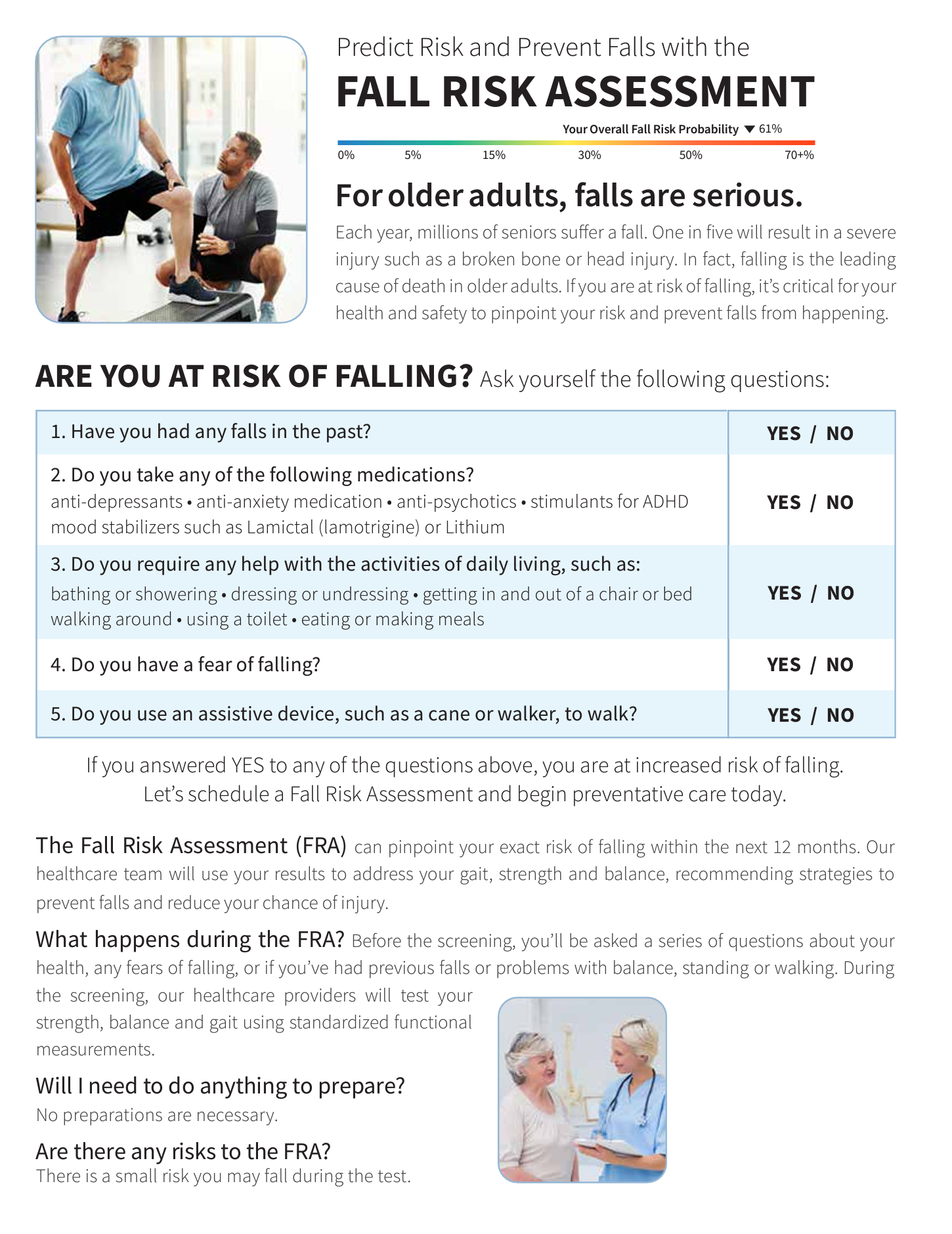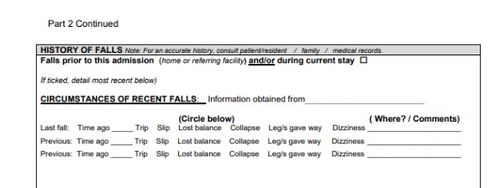Things about Dementia Fall Risk
Table of ContentsSee This Report on Dementia Fall RiskWhat Does Dementia Fall Risk Do?The smart Trick of Dementia Fall Risk That Nobody is Talking AboutThe Dementia Fall Risk Ideas
A loss risk assessment checks to see how most likely it is that you will fall. The evaluation usually includes: This includes a series of inquiries regarding your overall health and if you have actually had previous falls or troubles with balance, standing, and/or walking.Interventions are suggestions that may decrease your risk of dropping. STEADI consists of 3 steps: you for your danger of dropping for your threat elements that can be enhanced to attempt to prevent falls (for instance, equilibrium problems, impaired vision) to minimize your threat of falling by utilizing reliable strategies (for example, supplying education and learning and resources), you may be asked several concerns consisting of: Have you dropped in the past year? Are you worried regarding dropping?
If it takes you 12 seconds or more, it may mean you are at greater threat for a loss. This examination checks toughness and equilibrium.
Move one foot halfway forward, so the instep is touching the large toe of your various other foot. Relocate one foot fully in front of the other, so the toes are touching the heel of your other foot.
What Does Dementia Fall Risk Mean?
A lot of falls happen as a result of several adding aspects; for that reason, managing the threat of falling starts with determining the elements that add to drop risk - Dementia Fall Risk. A few of one of the most relevant danger factors consist of: Background of prior fallsChronic medical conditionsAcute illnessImpaired stride and balance, lower extremity weaknessCognitive impairmentChanges in visionCertain risky drugs and polypharmacyEnvironmental elements can additionally increase the danger for falls, including: Poor lightingUneven or harmed flooringWet or unsafe floorsMissing or damaged hand rails and grab barsDamaged or poorly equipped equipment, such as beds, wheelchairs, or walkersImproper usage of assistive devicesInadequate guidance of individuals staying in the NF, including those who exhibit hostile behaviorsA successful autumn threat monitoring program calls for a complete clinical assessment, with input from all members of the interdisciplinary group

The care strategy should additionally include interventions that are system-based, such as those that promote a secure atmosphere (proper illumination, hand rails, grab bars, click for info and so on). The performance of the interventions must be reviewed occasionally, and the care strategy revised as required to reflect adjustments in the fall risk evaluation. Applying a loss risk administration system using evidence-based ideal technique can lower the prevalence of falls in the NF, while restricting the potential for fall-related injuries.
Facts About Dementia Fall Risk Revealed
The AGS/BGS standard recommends screening all grownups aged 65 years and older for loss risk each year. This testing is composed of asking clients whether they have actually fallen 2 or more times in the previous year or sought clinical attention for an autumn, or, if they have not dropped, whether they feel unstable when walking.
Individuals that have actually fallen as soon as without injury ought to have their equilibrium and gait evaluated; those with gait or equilibrium abnormalities ought to obtain extra assessment. A history of 1 fall without injury and without stride or balance troubles does not necessitate more evaluation beyond continued annual loss threat screening. Dementia Fall Risk. A fall danger assessment is called for as component of the Welcome to Medicare evaluation

Getting My Dementia Fall Risk To Work
Documenting a drops background is one of the high quality indications for autumn prevention and management. An essential part of danger evaluation is a medicine review. A number of classes of medicines boost fall risk (Table 2). copyright medications in specific are independent forecasters of drops. These medications often tend to be sedating, alter the sensorium, and impair balance and gait.
Postural hypotension can commonly be alleviated by minimizing the dosage of blood pressurelowering drugs and/or quiting medicines that have orthostatic hypotension as a side impact. Usage of above-the-knee Visit Website assistance hose and copulating the head of the bed raised might also minimize postural decreases in high blood pressure. The advisable aspects of a fall-focused checkup are received Box 1.

A TUG time above or equal to 12 secs suggests high loss threat. The 30-Second Chair Stand test evaluates lower extremity stamina and equilibrium. Being incapable to stand from a chair of knee elevation without making use of one's arms shows raised loss danger. The 4-Stage Balance test evaluates fixed equilibrium by having the individual stand in 4 placements, each considerably much more difficult.